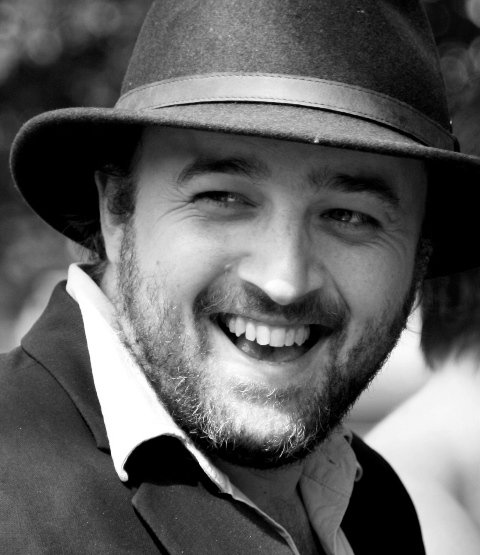The Usedom Train
An UBB train bound for Świnoujście Centrum, seen here in high season (photo © hidden europe).
At Koserow station we waited for the train. We had walked from the pier and the beach through the resort to the very edge of town. From the platform we could see the shallow waters of the lagoon that divided the island of Usedom from the mainland. The sky was overcast. A German Baltic resort, off season. We had the platform to ourselves.
When the twin-carriage train of the Usedomer Bäderbahn (UBB) arrived and we climbed aboard, we saw that we were not alone. The resorts of Usedom are popular whatever the time of year for their beach walks and sea air, and there are a number of spa clinics for visitors sent north by their doctors for weeks or months of rest and recuperation. Some of our fellow travellers were just arriving from the mainland. Others were taking a day trip, visiting a different part of Usedom. From the train we watched the island landscapes pass by as we moved from town to town. Kölpinsee and Bansin. Heringsdorf and Ahlbeck.
Once fishing villages and small island communities, over the course of the 19th century these became some of the most popular tourist destinations for Berliners, who travelled north to Usedom in such numbers that this stretch of the Baltic coast became known as Berlin’s bathtub. But we were taking the train for a different reason. We had caught the UBB in order to go across the border, for this small island train was – believe it or not – an international service.
Since 1945, the eastern end of Usedom has been part of Poland. That fragment of Polish territory is dominated by the town of Świnoujście (previously known as Swinemünde). Before the war there were direct trains from Berlin to Swinemünde and then on to the other resorts of the island. But with the changing of the borders Świnoujście became a kind of island on an island, linked to the rest of Poland only by a ferry and cut off from the rest of Usedom by fences and border guards, and a no-man’s land carved out of the forest.
This border zone was still visible from the train as we moved from Ahlbeck towards the final destination of Świnoujście Centrum. With Poland joining the European Union in 2004 and then becoming part of the Schengen zone in 2007, most of the border fortifications were removed and the railway, which had previously stopped at the border, was extended in 2008 to link Świnoujście with the rest of the island. People could now move back and forth across the border, on foot and bicycle, by road and rail. The island felt whole again.
We were travelling to Świnoujście for no other reason than curiosity. Perhaps because of growing up on an island myself, land borders have always fascinated me. The excitement of early Interrail trips was as much the novelty of being able to take the train to another country as it was what I found when I got there. To be on holiday in Koserow and to be able to take a small, local train to Poland was an attraction in and of itself.
But of course, if borders can be opened, they can also be closed. The coronavirus pandemic saw restrictions all along the German-Polish border, and Usedom was no exception, with Poland closing its borders to foreigners on 15 March. It was not exactly like it was before, but the road was blocked and the trains no longer travelled along the two kilometres of tracks on the Polish side of the frontier. Ahlbeck was once more the end of the line and Świnoujście became an island on an island once again, it’s transport links reduced to the ferry across the Świna.
Thankfully, this past weekend has seen the restrictions lifted. Usedomers from both sides of the border can once again make the short journey to visit the other part of the island. And the UBB trains have become international services again. It would have been nice to be on that first train to slip gently through that gap in the forest, arriving at Świnoujście Centrum after a journey that started in Stralsund. This regional train is just one small example of the cross-border services that connect our countries, and this weekend it was a symbol on this shared island, of a reconnecting Europe.
Read more about the island of Usedom and Germany’s Baltic coast in Paul’s book Ghosts on the Shore, published in June 2017 by Influx Press. hidden europe reviewed the book in November 2017.





About The Author
Paul Scraton
Paul Scraton was born in Lancashire and has lived in Berlin since 2001. A writer with a particular interest in landscape, memory and place, he is the editor-in-chief of Elsewhere: A Journal of Place. He is the author of a number of books including The Idea of a River: Walking out of Berlin (Readux, 2015) and Ghosts on the Shore: Travels along Germany's Baltic coast (Influx, 2017). His debut novel Built on Sand was published by Influx in 2019. Find out more about Paul on his website.